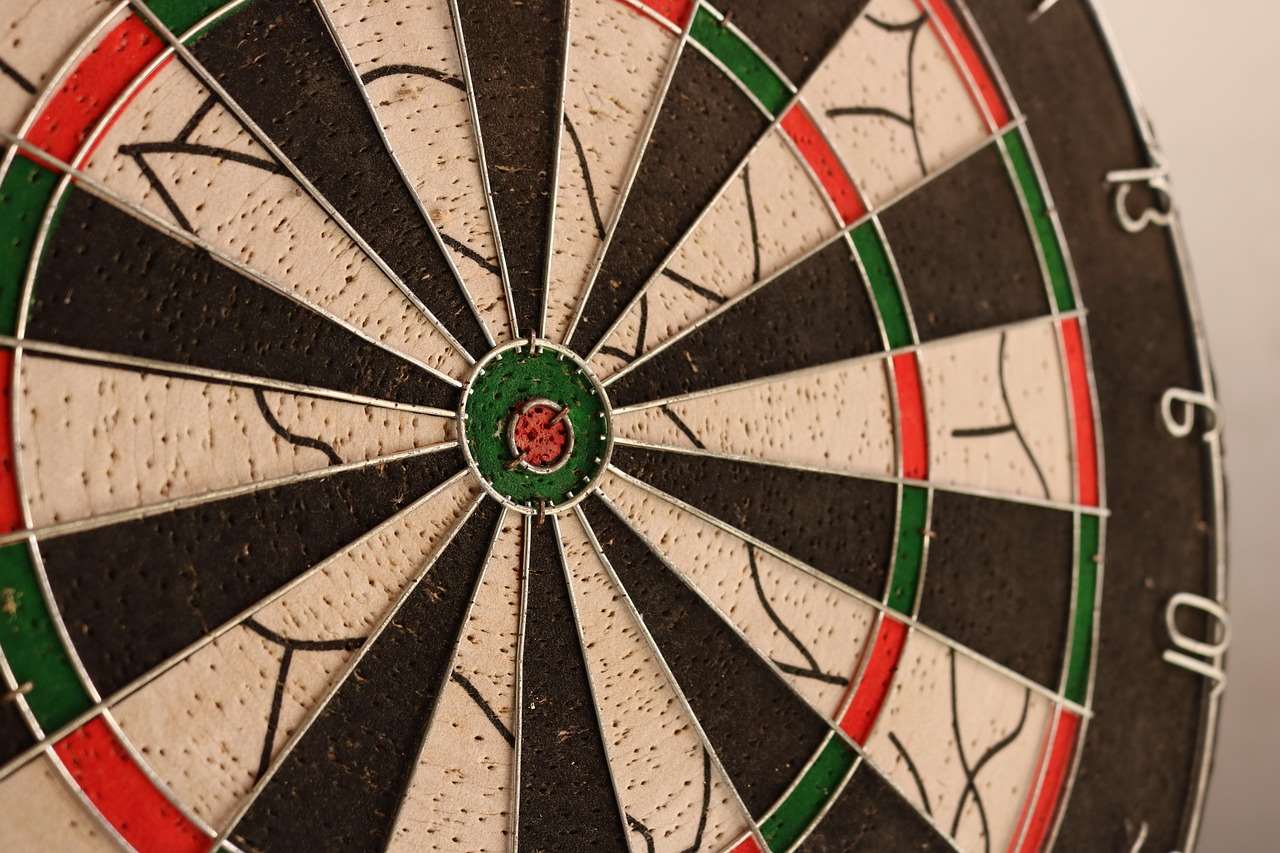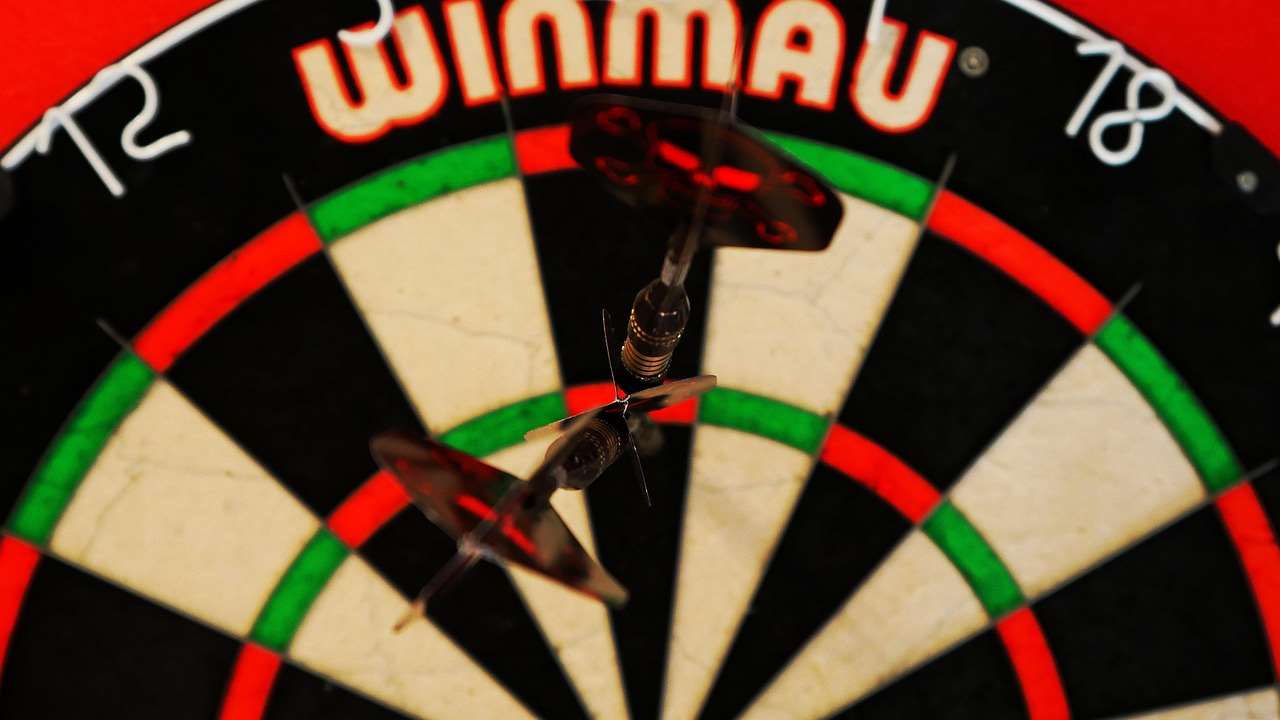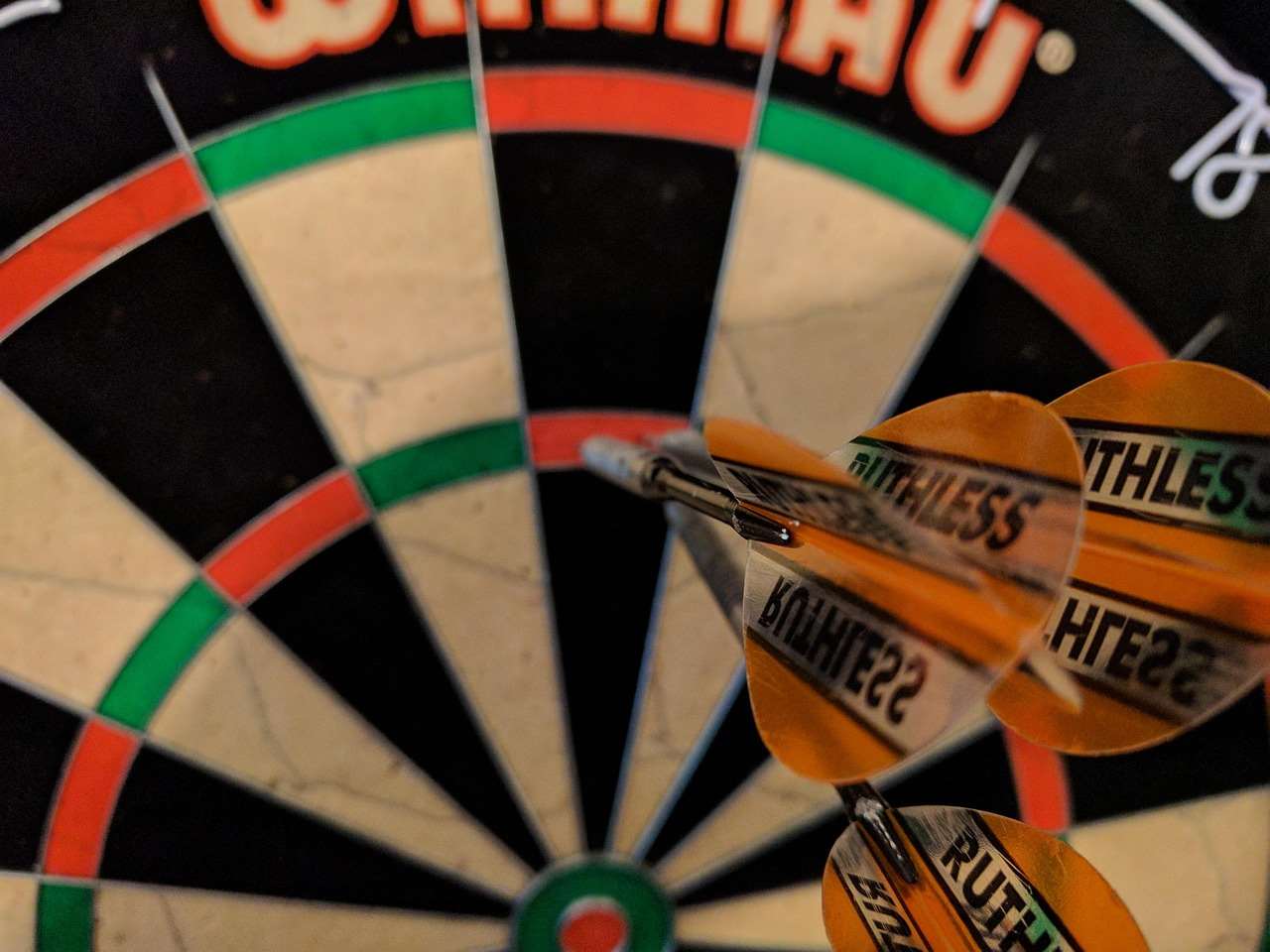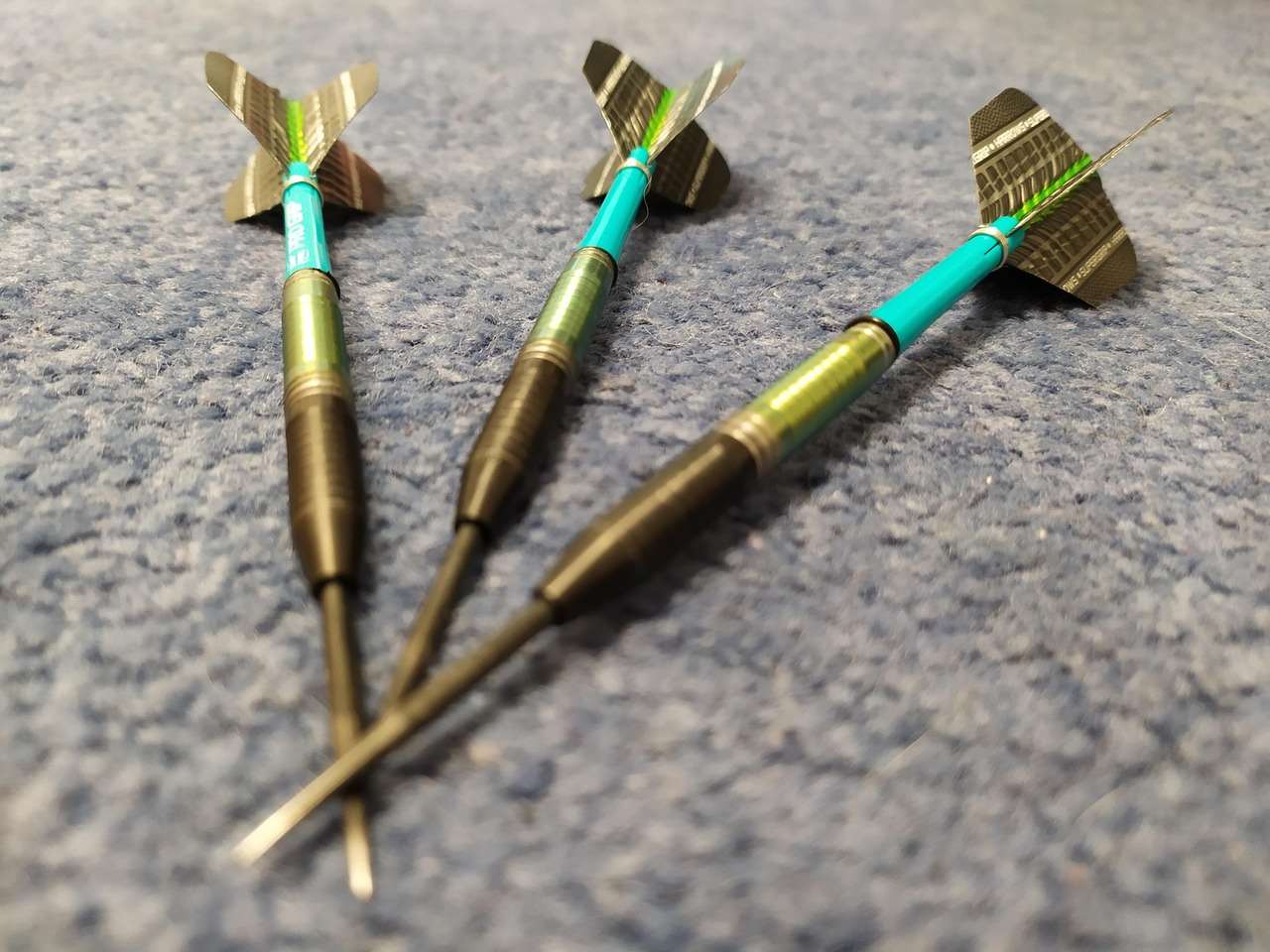The standard darts bulls eye height is precisely 5 feet 8 inches (1.73 meters) from the floor to the center of the bullseye. This article delves into the reasons behind this specific height, provides guidance on accurate dartboard setup, and explores other crucial aspects of dartboard regulations, including the oche distance and materials.
⚠️ Still Using Pen & Paper (or a Chalkboard)?! ⚠️
Step into the future! The Dart Counter App handles all the scoring, suggests checkouts, and tracks your stats automatically. It's easier than you think!
Try the Smart Dart Counter App FREE!Ready for an upgrade? Click above!
Understanding the Importance of Standard Darts Bulls Eye Height
Maintaining a consistent darts bulls eye height is critical for fair play and competitive integrity. Without a standardized height, players would be at a disadvantage when transitioning between different venues or practice setups. This standardization allows for a true test of skill, ensuring that victory is earned through accuracy and strategy, rather than adaptation to varying conditions. Using a reliable dartboard measuring tool will help to guarantee the precise height.

The established height also plays a role in the physics of the game. The trajectory of a dart is influenced by gravity, and the 5’8″ height is a balance that accommodates a comfortable throwing motion for most players while still presenting a reasonable challenge. Consistent use of official dart board specs when installing a board prevents competitive disadvantages.
How to Accurately Measure and Mount Your Dartboard
Ensuring your darts bulls eye height is accurate requires careful measurement and mounting. Here’s a step-by-step guide:
- Gather Your Tools: You’ll need a measuring tape, a level, a pencil, a drill (if mounting on a wall), and appropriate mounting hardware (screws, anchors, etc.).
- Measure the Height: Using your measuring tape, measure 5 feet 8 inches (1.73 meters) from the floor. Mark this spot on the wall with your pencil. This is where the center of the bullseye should be.
- Mark the Mounting Point: Most dartboards come with a mounting bracket on the back. Hold the dartboard against the wall, aligning the center of the bullseye with the mark you made. Use a pencil to mark the location of the mounting bracket on the wall.
- Mount the Bracket: Depending on your wall type (drywall, plaster, wood), use appropriate anchors and screws to securely attach the mounting bracket to the wall at the marked location. It is essential that the bracket is level, use a level to confirm.
- Hang the Dartboard: Carefully hang the dartboard onto the mounted bracket. Make sure it is securely in place.
- Double-Check the Height: Once the dartboard is hung, double-check that the center of the bullseye is still at 5 feet 8 inches (1.73 meters) from the floor.
- Fine-Tune (if necessary): Many dartboards have a rotating number ring. This can be used to adjust the board slightly if needed to ensure it is perfectly level.
Improper dartboard installation can lead to inaccurate gameplay, so taking the time to measure correctly and install the board securely is essential.
The Oche Distance and its Relation to Darts Bulls Eye Height
The oche distance, or throwing line, is just as important as the darts bulls eye height. The standard distance from the face of the dartboard to the oche is 7 feet 9 1/4 inches (2.37 meters). This measurement ensures a fair and consistent throwing distance for all players. Players should also consider using a Cricket darts scorer app (https://dartcounterapp.com/) to accurately track their scores and progress while ensuring the correct setup.

The oche should be a clearly defined line or raised platform that players must stand behind when throwing. Some players even use a physical darts mat to clearly mark the throwing line and protect the floor. Just as the darts bulls eye height is important for vertical alignment, the oche is crucial for horizontal alignment.
Common Mistakes to Avoid When Setting Up Your Dartboard
Several common mistakes can lead to an improperly set up dartboard:
- Inaccurate Measurements: Double-check all measurements to ensure accuracy. Using a quality measuring tape is recommended.
- Unstable Mounting: Ensure the dartboard is securely mounted to the wall. A wobbly dartboard can affect your throws.
- Ignoring the Oche Distance: Don’t neglect the oche distance. It’s just as important as the darts bulls eye height.
- Uneven Surface: Ensure the floor is level when measuring the oche distance. An uneven surface can throw off your measurements.
- Using the wrong mounting hardware: Always use the proper mounting hardware for your wall type.
The Significance of Dartboard Materials and Construction
While darts bulls eye height and oche distance are crucial for setup, the quality of the dartboard itself significantly impacts gameplay. Most professional dartboards are made from sisal fibers, tightly compressed to create a durable and self-healing surface. This allows the dartboard to withstand repeated throws without significant wear and tear. Players looking to improve their performance should invest in a high-quality dartboard. You can even look into dartboard restoration to maintain the quality of the dartboard.
Lower-quality dartboards may be made from cork or paper, which are less durable and can wear out quickly. The wiring of the dartboard is also an important factor. Thin, embedded wiring minimizes bounce-outs and increases scoring potential. A good dartboard is a worthwhile investment for any serious darts player. Perhaps using some best dart games to practice on this equipment.

Practicing and Improving Your Game with the Correct Setup
Once your dartboard is properly mounted at the correct darts bulls eye height and the oche distance is established, you can focus on improving your game. Consistent practice is key to developing accuracy and consistency. Here are some tips:
- Start with the Basics: Focus on your stance, grip, and throwing motion. Ensure you have a consistent routine.
- Practice Regularly: Even short practice sessions can help improve your skills.
- Target Specific Areas: Don’t just aim for the bullseye. Practice hitting specific numbers and doubles. This is crucial in how to win darts double.
- Analyze Your Throws: Pay attention to where your darts are landing and adjust your technique accordingly.
- Use Drills: There are many dart drills available online that can help you improve specific aspects of your game.
- Vary Your Practice: Don’t just play the same game every time. Try different games and challenges to keep your practice interesting.
Remember, consistent practice with the correct setup is the most effective way to improve your darts game. Consider watching the darts world championship final date to inspire you to achieve your own goals.
Beyond the Basics: Advanced Considerations for Darts Bulls Eye Height
While the standard darts bulls eye height is universally accepted, some advanced considerations can further optimize your setup:
- Lighting: Proper lighting is crucial for clear visibility. Ensure your dartboard is well-lit to minimize shadows and glare.
- Surround: A dartboard surround protects the wall from stray darts and can also enhance the aesthetics of your setup.
- Personal Preferences: While the standard height is recommended, some players may find slight adjustments more comfortable based on their individual height and throwing style.
Experimenting with minor adjustments can help you find the perfect setup that suits your individual needs and preferences, so you can enjoy playing at venues such as oche darts sydney or darts game glasgow.
Why Darts Bulls Eye Height Matters in Competitive Play
In competitive darts, adherence to the standard darts bulls eye height is non-negotiable. All official tournaments and leagues enforce these regulations to ensure fair play. Deviation from the standard can result in disqualification or penalties. The consistent height allows players to focus solely on their skill and strategy, without having to adapt to varying conditions. This is why official dart board specs are rigidly enforced.

Understanding and adhering to the rules regarding darts bulls eye height and oche distance is a sign of respect for the game and its traditions.
Maintaining Your Dartboard and Setup Over Time
Maintaining your dartboard and setup will prolong its lifespan and ensure consistent performance. Here are some tips:
- Rotate the Number Ring: Regularly rotate the number ring to distribute wear evenly across the dartboard.
- Clean the Dartboard: Occasionally clean the dartboard with a soft brush to remove dust and debris.
- Sharpen Your Darts: Sharp darts penetrate the dartboard more easily and reduce bounce-outs.
- Check Mounting Hardware: Periodically check the mounting hardware to ensure the dartboard is still securely attached to the wall.
By following these simple maintenance tips, you can keep your dartboard in top condition for years to come, and keep practicing your skills in wieze darts 2023 or similar events.

Conclusion: Achieve Precision with Correct Darts Bulls Eye Height
In conclusion, adhering to the standard darts bulls eye height of 5 feet 8 inches (1.73 meters) is paramount for fair play, consistent practice, and competitive integrity. By following the guidelines outlined in this article, you can ensure your dartboard is properly set up and maintained, allowing you to focus on improving your skills and enjoying the game to the fullest. Accurate measurements, secure mounting, and consistent maintenance are key to a rewarding darts experience. Now, grab your darts, set up your board, and start practicing. Consider downloading a darts vs computer app to further hone your skills and track your progress. Visit our website to explore more resources and learn more about improving your game!
Hi, I’m Dieter, and I created Dartcounter (Dartcounterapp.com). My motivation wasn’t being a darts expert – quite the opposite! When I first started playing, I loved the game but found keeping accurate scores and tracking stats difficult and distracting.
I figured I couldn’t be the only one struggling with this. So, I decided to build a solution: an easy-to-use application that everyone, no matter their experience level, could use to manage scoring effortlessly.
My goal for Dartcounter was simple: let the app handle the numbers – the scoring, the averages, the stats, even checkout suggestions – so players could focus purely on their throw and enjoying the game. It began as a way to solve my own beginner’s problem, and I’m thrilled it has grown into a helpful tool for the wider darts community.